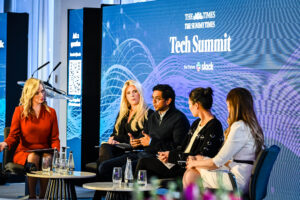For brand marketers, marrying short-term efficiency with long term efficacy has always been a troublesome challenge.
In this cultural moment, the solutions may lie in the psychological constructs of “displacement” and “coupling theory”.
These two terms, appropriated by Malcolm Gladwell in his book “Talking to Strangers”, help explain why people act as they do, and furthermore, in Gladwell’s words, “help us understand what we should know about the people we don’t know”.
Displacement
Displacement is an unconscious defence mechanism wherein the mind substitutes either a new aim or a new object for goals deemed to be dangerous or unacceptable in their original form.
Applied to the brand challenge of performance metrics versus brand-building, this theory rings true. For example, short-term marketing goals to hit certain benchmarks may actually do damage to long-term brand perception if they are not delivered within the appropriate context.
Consumers may rethink their opinion of a brand if errors are made by aiming for a short-term response or action.
For example, when consumers are bombarded with direct-response (DR) messaging (excess frequency is a profound challenge that clients are grappling with), they are making assumptions about the brand delivering those messages. Displacement means that this perception could be negatively apportioned to the whole brand and could, therefore, have a detrimental effect on long-term outcomes.
Coupling theory
Coupling theory is the idea that some behaviours are “coupled” - that is, a behaviour is linked to a specific context. It suggests a person’s behaviour is affected by his or her personal history and environment.
If we apply this theory to marketing strategy, it would appear imperative that the context of DR messages should be as closely considered as the context of any brand communication.
So, it could be argued that context is an imperative, irrespective of what you are trying to say to the consumer.
For example, the luxury sector has vehemently defended this principle, with the context of their advertising deemed essential to their most valuable asset, their brand. This has remained the same from the very evolution of modern advertising, the advent of newspapers and magazines in the 16th and 17th centuries.
Furthermore, if the personal history of the consumer is closely linked with their behaviour (within a given context), then that is a positive for businesses with a loyal customer base.
For media, context matters
The reciprocal audience relationship of a brand like The Times is built on trust, engagement and investment. A context that evokes an emotional as well as a fiscal investment is an optimal environment for advertisers to talk to consumers. For publishers, the importance of understanding an audience’s behaviour via first-party data becomes even greater if you apply “coupling” theory.
In May 2020, Wunderman Thompson felt compelled to re-publish 25 of its top 100 trends for the future. These modifications, of course, were accelerated by the pandemic. Publishing was no exception. Predicted consumption trends were fast-tracked as audiences sought out news and opinion from reputable sources. Indicatively, throughout the first eight-week lockdown period, The Times and Sunday Times subscriber base grew by 50,000, an increase of 10%, with half of these new audiences under the age of 46. At the same time, we diversified our Times brand portfolio with the introduction of radio alongside an increase in both our podcast and digital platforms.
Consolidating reader growth
In 2020, the World Economic Forum published its findings from a nine-month study into Value in Media. The results are a staggering move towards quality - in particular, amongst younger consumers.
- Across all respondents, 51% are willing in the next 12 months to support paid-for news content - up from 11% the previous year.
- Additionally, 16-to-34s are now twice as likely to pay for news as over 55s.
- The report looks at sectors such as news, music, sport and gaming - interestingly, for the first time, news ranks above gaming for consideration to pay for content in the next 12 months (20% vs 19%, UK only).
According to Deloitte research, more than one in three (36%) UK consumers read more news online as a result of staying at home during the first six months of the pandemic, with 42% expecting to continue to do so at similar levels once the current lockdown restrictions have lifted.
Building new ways for people to consume and enjoy content will ensure that the subscription spike is not short-lived but continues to support the industry as it navigates market uncertainty.
Times Newspapers’ future model will be focusing on building "engagement" with our members across a variety of different touchpoints. For example, 65% either read or make a comment on our digital articles, and 20% of Sunday Times readers spend up to 3 hours with the newspaper.
If we can maintain these levels of engagement across Times+ events, through e-commerce or brand extensions like the Sunday Times Wine Club, then reader revenue will continue to grow. Times Newspapers Limited, through its burgeoning subscriber base and its subsequent first-party data, understands more about its audience than ever before.
Closer to readers
Despite this it would be erroneous to conclude that audience understanding is the prerogative of the subscription publisher. The Sun news brand has built up an inclusive, reciprocal relationship with its audience, via a trusted value exchange. Examples include, the phenomenal promotion of £9.50 holidays which established The Sun as the largest UK tour operator.
From 300 letters a week to Deidre, to over 750,000 players of the “Dream Team” Fantasy Football League, and over one million members of Sun Savers (the coupon redemption offer), The Sun editorial, marketing and commercial departments have drawn a complex and multi-layered picture of their consumer base.
What The Times and The Sun have in common when it comes to their readers is that both relationships are built upon emotion. That’s why, at News UK, our commercial mission is to make brands matter through emotional connection.
The aim is to give brands the best possible chance of engaging emotionally with their and our customers. An emotional context is critical to ensure campaigns are effective, and News UK has built a proprietary data platform, News IQ, to unlock the potential of these emotional insights. We now know more about Gladwell’s “strangers” - the people who consume our content, irrespective of the platform they consume it on. We understand more about their opinions, preferences and emotions, and we can target appropriate emotional context that is congruent with advertisers’ creative.
Bridging the stranger gap
What are the priorities for consumer engagement going forward? Foresight Factory predicts consumers will look for certainty and resilience, presence-free commerce and connectivity, value in the aisles, escapist reverie, and a more holistic approach to wellbeing considers social connections to be as important as hygiene, safety and nutrition.
Publishers, too, must react to these priorities with their own certainty and resilience.
Malcolm Gladwell challenges our shared assumptions and, in his book, casts doubt on strategies for dealing with the unknown. But publishers have attempted to bridge this gap.
In these troubled times, learning more and more about the strangers who consume their content will enable them to drive both reader and advertising revenues.



 News UK
News UK 






